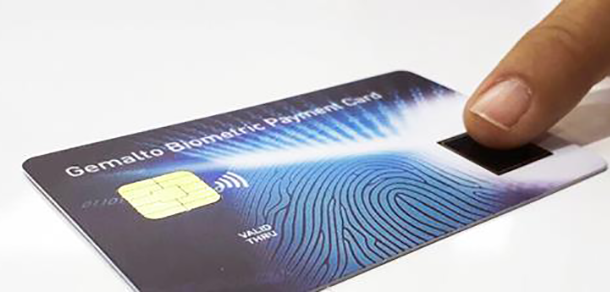Gemalto biometric payment cards set to debut in Cyprus
16 February, 2018
category: Biometrics, Financial
The Bank of Cyprus plans to issue biometric payment cards that enable users to employ fingerprint authentication for transactions instead of PINs. Gemalto is supplying the card and said the program is the first of its kind in the world.
Card users enroll in the fingerprint authentication program at bank branches, and a self-service option will likely launch in the second half of 2018
The cards are EMV-compliant and feature contact and contactless interfaces. The cards will work at existing payment terminals in Cyprus. Card users place a finger on a terminal sensor to initiate the fingerprint authentication, during which “a comparison is performed between the scanned fingerprint and the reference biometric data securely stored in the card,” Gemalto said. “The biometric sensor card is powered by the payment terminal and does not require an embedded battery; this means there is no limit from battery life nor on the number of transactions.”
Card users enroll in the fingerprint authentication program at bank branches, where customers use a Gemalto-supplied tablet to quickly complete the application process—a self-service option will likely launch in the second half of 2018. The entire biometric payment card program is designed for efficiency, said Paul Kobos, Gemalto’s senior vice president of banking and payments, North America. Not only do customers gain an added layer and sense of security, but other stakeholders have to do little to take part.
The biometric payment cards require no major changes on the back-end
“The way these contactless fingerprint biometric payment cards operate means that nothing changes with terminal or back-end infrastructure, so banks and issuers don’t have to worry about rubbing retailers the wrong way, while those merchants can see a decrease in fraud thanks to an innovation that doesn’t require investment or retraining of staff on their part,” Kobos said.
That’s not to say other financial institutions will rush to issue similar biometric payment cards. “I wouldn’t necessarily say we’ll see these cards launched en masse, even once we’re past the pilot phase,” Kobos said. “More than likely, banks will segment their portfolios and roll these cards out to high-value individuals and customers who frequently make high-value purchases (like commercial buyers) first. Once people start seeing these cards used in the wild later this year or early next, I expect some broader demand and pull should be generated by consumers.”
The fingerprint biometric is stored only on the cards, Gemalto said. “When you’re designing and engineering within the confines of a traditional plastic card that you don’t want to make any larger, thicker, heavier or more complicated to use, fingerprint is the most natural fit for a biometric sensor that’s placed right where a users’ thumb would rest on the card anyway when inserting it into a payment terminal,” Kobos said. “Additionally, the choice for fingerprint was driven by consumers becoming more universally comfortable confirming their identity through their mobile phone using fingerprint ID.”



